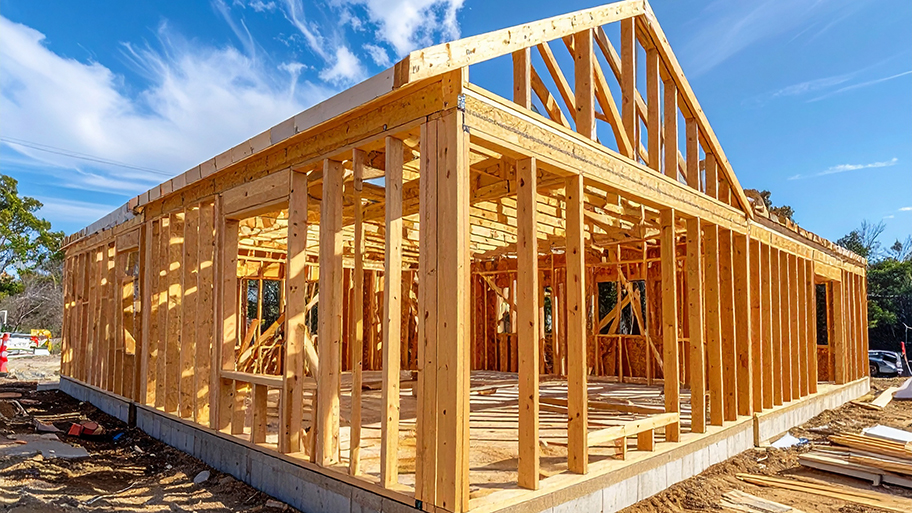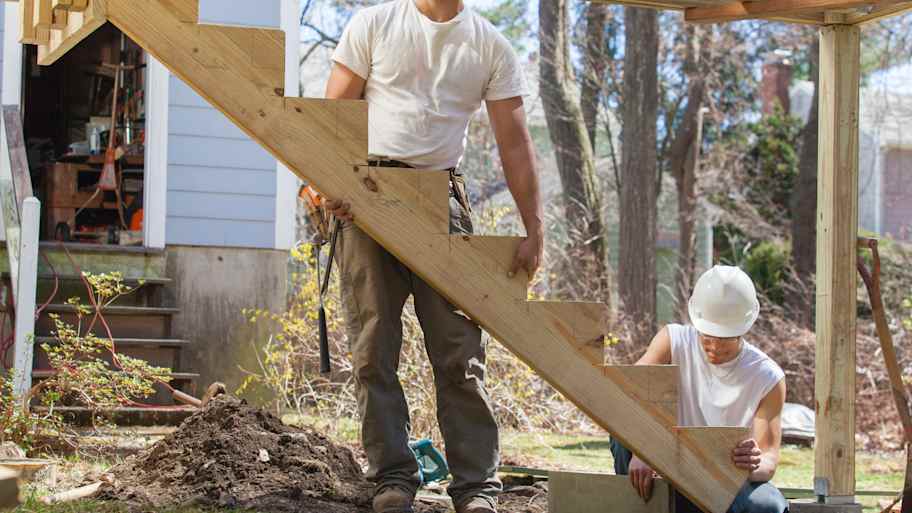
Winterizing a house depends on its type, size, location, and more. Our guide breaks down how much it costs to winterize a home.
To ensure a smooth renovation and a great relationship with your contractor, go straight to the source


If you’re new to home renovation projects, the whole process can be exciting—if not a little overwhelming. That’s totally normal. If you want to go into the project prepared, there are a few tips you can follow for success.
First and foremost, be sure to hire a local home renovation contractor who is experienced and well-vetted. Then, follow these tips to help yourself stay informed and on track during your project.
Despite what your favorite home makeover show might have you believe, home renovations hardly ever get completed in 30 minutes with commercial breaks. You and your contractor both want the same thing for your renovation project: quality work that’s brought in on schedule and within budget.
If you catch yourself wondering why that full kitchen remodel isn’t done in two days, remind yourself that this isn’t TV—it’s your home, and you want the best quality that you can afford. That takes time and patience.
Of course, if your contractor isn’t meeting agreed-upon schedules, that’s another matter entirely—one you should bring up with your contractor immediately.
Believe it or not, your contractor wants you to communicate with the company and the on-site manager. The workers, team leads, and other people on your contractor’s team are all professionals. They also understand that you may not always know what’s going on or why things are done a particular way.
If you spot something you don’t understand or that you don’t think complies with the specifications you established with your contractor, bring the matter up to the appropriate person during work hours. Don’t wait to raise an issue. It might only get more expensive to fix the problem the longer you wait.
To do this in a productive way, try sticking to factual statements and ask for clarification before demanding a fix. Saying “I’m not sure I understand why we’re doing X. I think previously we said Y. Can you help me understand that?” will lead to a smoother conversation.
Do you secretly want your contractor to work $10,000 worth of home makeover magic on a $1,000 item budget? Well, sure, who wouldn’t? Of course, that’s an unrealistic expectation in the vast majority of cases.
Fortunately, you don’t have to be a purchasing expert on construction materials, but a working understanding of pricing and general material costs helps you keep track of the budget and the payment terms with your contractor. Again, don’t be afraid to ask questions here.
Finally, be aware that material prices change from time to time thanks to supply chain issues, material shortages, and inflation. These are typically not aspects within your contractor’s control.

Before your contractor’s team lifts the first sledgehammer or screwdriver, you and the contractor or their representative will sit down and carefully negotiate a scope of work. You’ll determine a budget for the project, and they will help you establish priorities and how that budget should be allocated.
Don’t let that information fly out of your head the second after you sign the contract. Make sure you understand your project’s specs and the full scope of the work you’re paying them to complete. Maintain a few clear copies of the scope so you can keep on top of the project as it progresses.
You’ll also want to know as many specifics as possible. Be able to share the shade of paint you decided on, the color of the hardware, the model of the refrigerator, or the style of countertops being installed. Take notes, as having this information on hand will help you stay involved in your project from start to finish.
In a perfect world, you could sign the contract, the team would begin work the next day, and everything would be done in record time. Unfortunately, this is a fantasy (although a nice one, we agree!), and that’s due primarily to one thing: These things take time—sometimes a lot of it.
One place where homeowners are often surprised is in the lead time for ordering materials. Sometimes there can be quite a lag between the date of order and the date of delivery, thanks to a number of different factors such as customization and supply chain issues.
Moreover, changes in the specifications or scope can happen from time to time. Those change orders also have to be processed and can affect the time it takes to get a specific part of the work done.
When changes are likely to result in further delays, there could be trickle-down consequences. In complex cases, contractors use a Gantt chart, which is just a way to show a project’s activity against a specific length of time. The Gantt chart helps track delays and how they affect the project’s deadline. You can ask to see a copy of that or request that your contractor brief you on those delays in writing.
Also, recognize that your contractor and their team do not work around the clock. They’ll need breaks and mealtimes, and they’re not necessarily available for earlier start times or later quit times. Again, this is why communication is key and setting reasonable expectations from the jump is so important.
Depending on the nature and extent of the work being done on your home, your project may require permits from your local code enforcement office. It’s always a good idea to ask your contractor about this early in the process, while you’re negotiating your specifications and scope. The cost of those permits can add significantly to the total project cost, so it’s a good idea to make sure those are listed out specifically in your budget and included in the contractor’s total fee.
Permits may also necessitate an inspection or two. That’s usually not a problem, and most experienced contractors on most common renovation projects can work around those inspections. However, on occasion, a permit inspection and site visit might delay workers from tackling the next thing on the list. Try to be patient and understanding if this happens to you. It’s truly out of your contractor’s hands.
From average costs to expert advice, get all the answers you need to get your job done.

Winterizing a house depends on its type, size, location, and more. Our guide breaks down how much it costs to winterize a home.

The cost to frame a house can vary depending on the size of your home, the structure you’re building, and your materials. Keep reading to learn how much framing your house might cost.

Use our guide to calculate the cost to install a stair lift in your home. Prices depend on the type of stair lift, including the seat style and other advanced features.

The best questions to ask contractors are about protecting your interests and the investment you are making in your home.

Stair stringers support every step you take. From wood to steel, open to closed—explore the different types, materials, and whether to DIY or hire a pro.

Curious about how to frame a house like a professional? While it's rarely a DIY job, understanding the process can prepare you for your upcoming home construction.